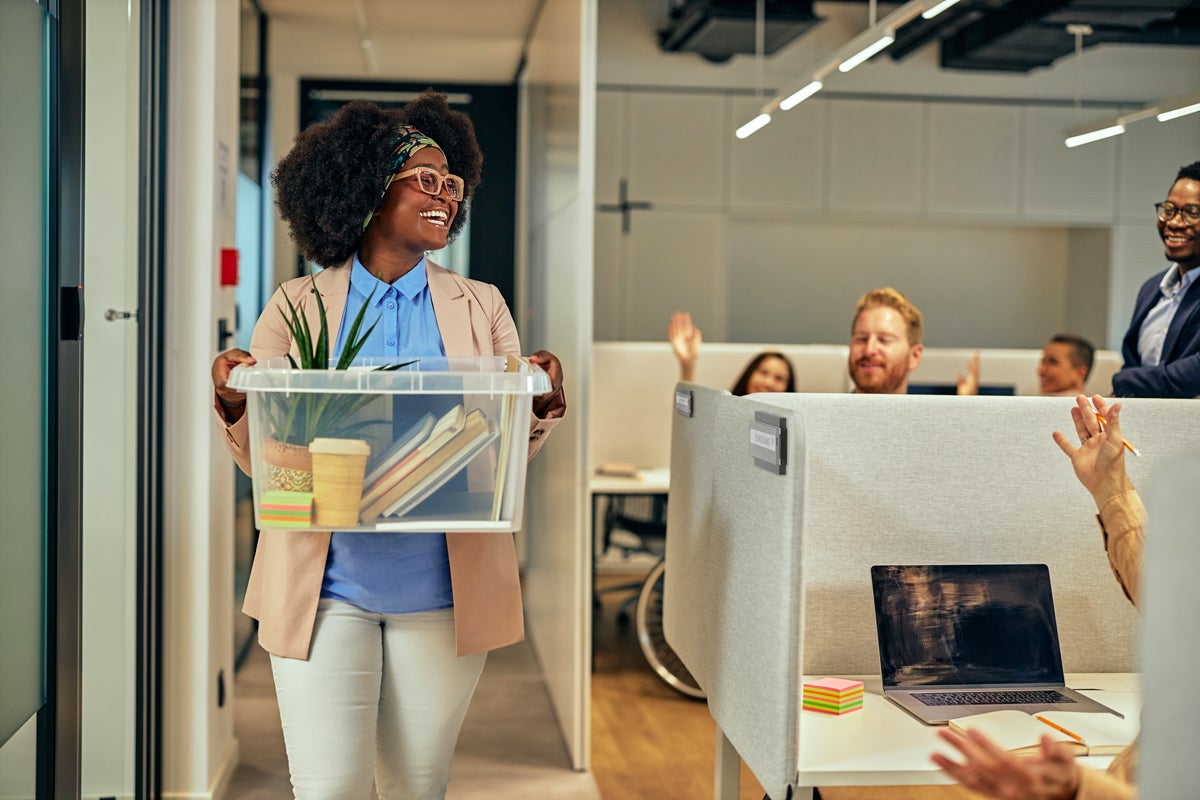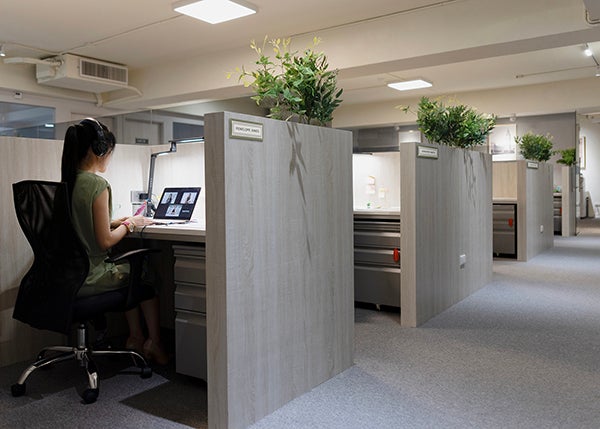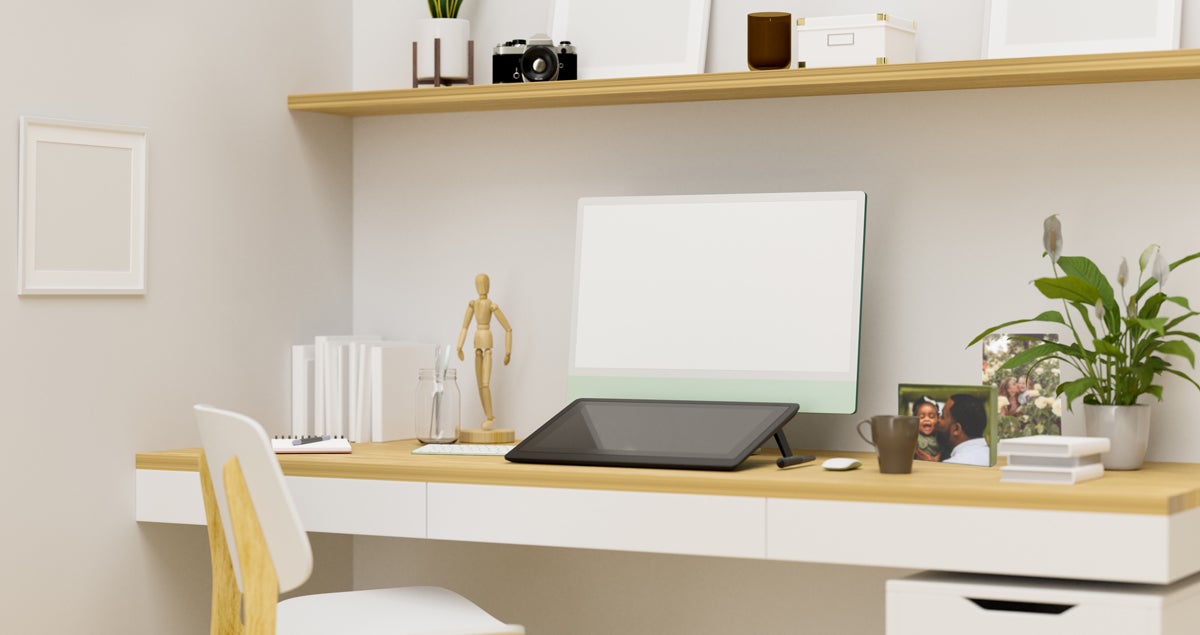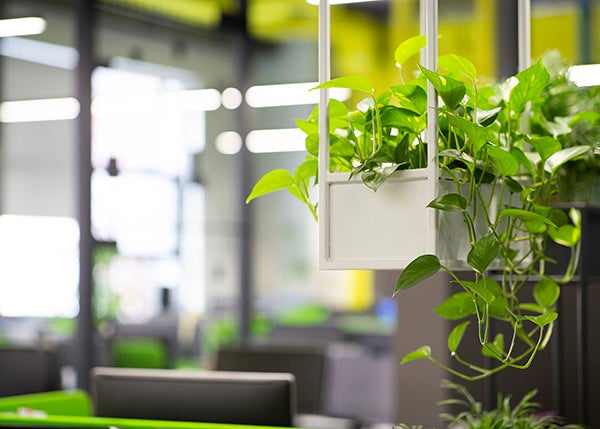Creating a Welcoming Environment as Employees Return to the Office
by Julia Kicinski

We've all heard of someone switching from fully remote work back to in-office. They're usually passionate about the decision, with emotions ranging from disappointment over losing a feline work companion to excitement about leaving the neighbor who never fails to start his lawn mower exactly when the phone rings. Due to the mixed feelings involved, the overall office transition process has looked a little bit different for everybody. Some companies have found that they prefer a hybrid schedule that balances employees' home and office work preferences, while others are moving employees to full on-site work.
Regardless of your company's situation, if your employees are returning to the office, you are likely considering what steps you need to take to prepare for this change. How can you ensure a smooth shift from a private home office to a formal corporate office? This transition period provides you with a unique opportunity to revamp the office workspace to create a welcoming environment for your returning employees. Here are some tips for preparing the physical office space to maximize employee contentment and output.
Provide Comfortable Work Stations

If your employees have been working from home, they're probably used to the luxury of sacking out on a living room couch or adding an extra pillow to their office chair when they require some extra support or a change of scenery. Remember that your in-office staff is likely spending at least 8 hours a day at the same work station; put in the extra effort (and yes, maybe some extra money) to supply your workers with ergonomic office furniture, which is designed to promote good posture, providing maximum comfort and support. Offer adjustable chairs or even climate in the workplace. Walking past a row of employees huddled under blankets probably isn't a great sign that your office is an agreeable temperature. Having an adjustable thermostat to avoid sweltering or freezing can be a huge perk to employees—that is, until everyone realizes that the reason the temperature is never quite right is because they've all been changing it. If the thermostat is not easily adjusted or (as is often the case) there's no perfect temperature or climate to suit everybody, consider having space heaters and fans available to help maintain reasonable temperatures in personal workspaces.
Set the Tone with Office Layout

Whether you meant to or not, you've joined the debate about what type of layout is most effective for the office: cubicles or open concept. The layout you implement will set the tone for how your employees interact with each other as they head back to work—perhaps for the first time in quite awhile—so choose your stance wisely! Start by asking informative questions about the needs of your particular office. What sort of environment do you want to cultivate? How do your employees work best? How much collaboration is involved in company projects? The answers to these questions should set you on the right track to arranging the perfect office space.
Office cubicles, although known to provide a distraction-free environment for focused work, are quickly becoming less popular as the preferred office workspace. In contrast, the trending open space concept is designed to encourage frequent communication as employees have visual access to each other, can chat with their neighbors without disturbing an overly silent atmosphere, and feel free to shuffle chairs around to work with a new partner. Allowing a flexible layout with moveable furniture can prompt employees to set up an adaptable collaborative workspace; for instance, circular conference areas may develop temporarily in the middle of the office, replaced the next week by separate work stations around the perimeter of the room as employees branch off to work in pairs or on individual portions of their projects.
Should you opt for an open concept workspace, try compromising and include some private or semi-private areas for employees who may need a space for focused work or are easily drained by a busy environment. Moveable partitions allow employees to set up temporary semi-private work areas in the open space. You can also offer a limited number of cubicles with fully or halfway transparent partitions to fit in with your modern design and eliminate any feelings of segregation from the rest of the team. Consider having private rooms available for reservation, whether a small meeting room with a whiteboard for an involved brainstorming session or a spacious conference room with a presentation screen for larger groups.
Update and Personalize Office Decor

Time for an overhaul of your general office decor! The last thing you want is for your employees to be constantly distracted and unmotivated because they can't stop rolling their eyes at the outdated wall calendar in the hall or picking at peeling paint next to their desks. Check for areas that could use a fresh coat of paint or inspirational artwork to brighten up the atmosphere. Consider choosing a new color scheme for your walls; incorporate happy colors like yellow to stimulate creativity or a dark shade of blue to increase energy and efficiency. Inspect your office room signs to make sure each area is properly labeled with updated wayfinding and informational signage. Chances are, your decor improvements will leave your original signage lacking pizzazz, a problem signmojo.com can easily help you solve with brand new signs complete with updated designs to complement your new look.
As employees return to the office, encourage them to bring along personal decorations like family photos or cartoon bobbleheads to display at their work stations. Items such as children's artwork, light-up fidget spinners, and humorous plaques bring personality to the office, and you'll always know when somebody walks past your neighbor's desk if they've rigged up a motion activated sound effect. If you have a boisterous office atmosphere, don't shy away from including funny nicknames when you order formal nameplates for any applicable offices or cubicles. Let's face it, they'll probably pop up eventually on their own. Adding these small touches of home can go a long way toward transforming a stilted office into a welcoming workspace.
Embrace the Outdoors

Ever come across an uncharacteristically grumpy person after they've spent a long day cooped up in a windowless office? Studies have shown that allowing natural light in the workplace can improve mood and alertness, increase productivity and quality of work, and reduce eye strain. Increased natural light has also been known to improve sleep quality, which helps employees feel better rested and prepared for work each day. Even an act as simple as pulling up the shade on a window that faces the afternoon sunshine can make a significant difference in the amount of natural light to the workplace. You can always rearrange desks as necessary to allow maximum sunlight without inconveniences like reflections or sun glare on computer screens.
Think outside the box to give your employees the benefit of outdoor exposure during the workday. If possible, provide an outdoor space like a patio or garden to take short walks in the fresh air or shoot hoops at a strategically placed basketball net. When all else fails, bring the outdoors inside! Indoor plants have been known to promote a calm environment and increase productivity and memory. Additionally, plants can be used as a creative way to divide or arrange a workspace: tall plants can substitute for desk dividers, rectangular planters can break extensive open space into walkways, and a small bushy tree can offer greater privacy. The possibilities are endless!
Don't Forget the Parking Lot
We all know that feeling of self-congratulation when we manage to get to work right on time despite multiple mishaps at home, bumper-to-bumper traffic, and that unbelievably long line at the coffee shop. Unfortunately, we can also empathize with the moment of panic that follows when somebody pulls into the last open parking spot right in front of us.
The outdoor space of an office can easily be overlooked in the whirlwind of creating a welcoming indoor space, but you can save your returning employees from daily concerns about showing up late due to parking difficulties by securing them plenty of space to park near the office. While you're prepping the parking lot, keep the area safe and navigable by posting appropriate regulatory traffic signs, including clear markers of reserved spaces where applicable. Easy and reliable parking will help your employees arrive at work on time and in a much better mood than if they had just spent half an hour circling the neighborhood for available parking.
Maintain an Accessible Workplace
As you're revamping the office workspace, remember to keep your options legally compliant as well as comfortable and accessible for all your employees. The Americans with Disabilities Act (ADA) requires employers not only to refrain from discriminating against employees or prospective employees based on disability status, but also to offer reasonable accommodations to people with disabilities. When you're reviewing availability in your parking areas, reserve accessible spaces closer to the building for your employees with disabilities. Keep any new layouts for your office space uncluttered and safe for assistive devices such as wheelchairs and canes. Provide accessible restrooms and clearly mark them with proper signage that includes braille, raised text, and properly contrasting colors to make sure that everybody can locate them without difficulty.
Having accessible technology can make a world of difference to all your employees, but particularly to those with disabilities. Offering employees up-to-date technology with the tools they need to perform their job will increase productivity and decrease frustration. Keep your software current to ensure that office programs support any assistive technology your employees may find useful in their day-to-day work. To accommodate employees who may be deaf or hard of hearing, have closed captioning or transcripts available for any audio or video elements of the job.
Offer In-Office Amenities

It's a well-known fact: working in the office all day can be draining. You wouldn't expect your phone to keep running without a recharge (although all of us would love if it did); in much the same way, your employees will perform better if they have a space to relax and recharge away from their desks. One simple way to build this area into the office space is to provide a furnished—or even stocked—break room for your staff. For some employees, knowing that coffee or a healthy snack is waiting for them in the break room can add a bright spot to their day. If you're not in a position to regularly offer snacks and beverages, having a kitchen area equipped with appliances like a coffee maker, refrigerator, and microwave ensures that employees can have a place to store and prepare their own food.
Incorporating a common area furnished with comfortable seating outside the formal workspace provides employees with an opportunity to relax, recharge, and socialize during their breaks. This can be merged with an employee break room or, if you have the space and opportunity, can be a separate lounge area to allow for separation from food preparation. A small fitness center can also offer employees an opportunity to step away from their focused office work and alleviate stress with the added perk of improving physical fitness.
Make Working in the Office a Positive Experience
As an employer, you know better than anybody how many moving parts go into shaping the office into a comfortable, productive environment. Starting with the basics that you know you need for functionality provides a solid foundation for a smooth transition from working from home to working in an office. Build onto that foundation by listening to and incorporating employee feedback on what they look for in a positive office environment. Good luck with your transition process!